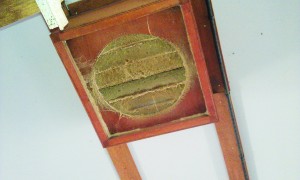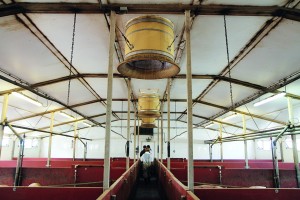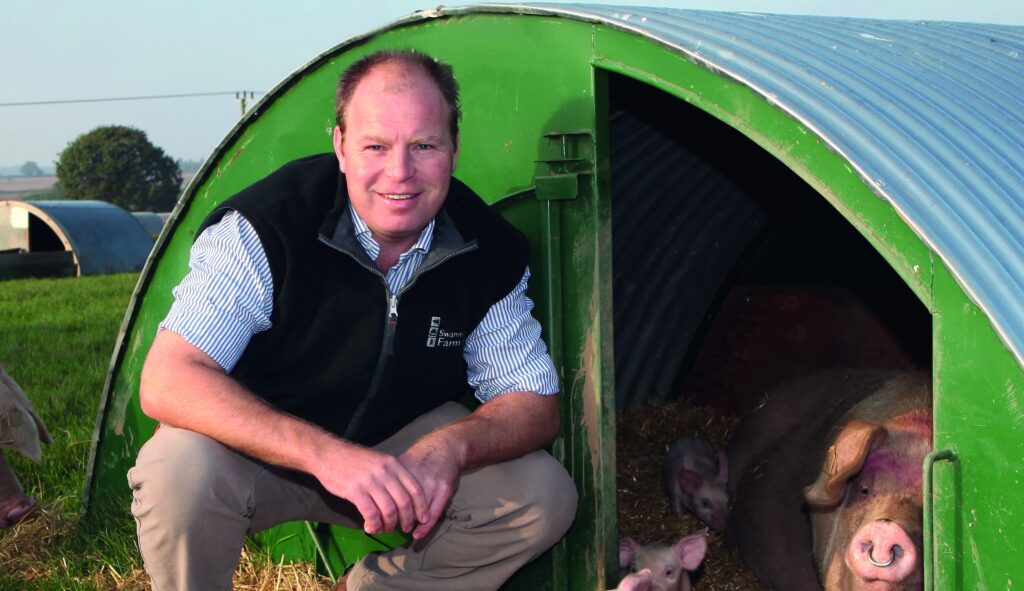Following a few small tweaks to his ventilation system and implementation of a basic maintenance programme, Norfolk pig producer Rob Mutimer no longer has to treat his pigs for respiratory problems, a saving of up to £2.70 per pig.
With help from the AHDB Pork environment and buildings team, he has successfully taken small steps to improve ventilation, resulting in improved health and productivity and, most importantly, a reduction in antibiotic usage.
“We farrow 700 sows outdoors and the pigs are grown in straw-based tents up to 30kg,” Mr Mutimer said.
“Once at this stage, they’re moved to one of our three finishing sites, all of which are straw-based and fitted with automatically controlled natural ventilation (ACNV) systems.
“This means that the air is supplied and removed from the buildings via side inlets, without the use of a mechanical system.
“We then use curtains, which are fitted on the side of the building, to control the temperature inside.”

Overcoming ventilation issues
Two years ago, some of Mr Mutimer’s pigs were experiencing respiratory problems once inside the finisher housing. He also noticed that they were dunging in the wrong place.
He said: “At the time, we had two finisher buildings. Of these two buildings, only one had fans installed, while the second housing unit had no mechanical ventilation system of any type. However, neither building was working to its full potential. In fact, both were inefficient and inconsistent.”
Mr Mutimer called in AHDB Pork to review the buildings’ ventilation, with particular attention to improving the existing fan system in one building and choosing an appropriate system for the other housing.
He said: “After close inspection, we made a decision to install fans in this building to help improve the air movement and overall environment for the pigs. Once the fans had been installed, we used smoke bombs to check the air movement in the building and, reassuringly, the fans were doing what they should have been.
“Incoming cold air was being directed to the middle of the pens where it then fell to the ground. Once the building ventilation system was fully operational, we immediately noticed that the pigs started to dung in the middle of the pens, where it’s cooler, and lie against the outside, where it’s slightly warmer.
“In the second finisher building, as expected, the team noticed that the existing fans weren’t working to their full potential, so we measured output and then fitted some more timers and increased the volume of air circulated by the fans.”
The overall improvements in health and productivity are fantastic. We’re using a lot less antibiotics and are therefore saving money
Following AHDB Pork’s review, ventilation improved in the two buildings, which has led to a positive impact on the bottom line. So impressed was Mr Mutimer, that a third finishing house has been built and fitted with a similar ventilation system. The improvements across the whole unit have almost eliminated respiratory-related illnesses and cases of pneumonia are now rare.
“The overall improvements in health and productivity are fantastic,” he added. “We’re using a lot less antibiotics and are therefore saving money but also helping to reduce our total on-farm antibiotic usage, which will be key to meeting incoming usage guidelines.
“The fact that the pigs are now dunging in the right place is saving us time in terms of mucking out. When it comes to washing out at the end of a batch, the buildings are generally cleaner, which means the risk of disease spread between batches is reduced.”

Benefits of improved ventilation
AHDB Pork’s visit also generated new ideas and highlighted basic maintenance issues, which have since been addressed. “We now review our ventilation systems routinely and I also feel that our staff are more on board, which is key,” Mr Mutimer said.
AHDB Pork environment and buildings officer Emma Slater (pictured, below) said the pig behaviour seen on Mr Mutimer’s farm was consistent with inefficient ventilation systems, which, when working well, should draw fresh air into the building and remove stale air containing microbes, dust, harmful gasses and water vapour. Many producers also invest in new systems, but neglect maintenance.
She said: “Producers should be aware that inefficient ventilation systems could have detrimental effects, such as those seen on Mr Mutimer’s unit. Producers should closely monitor behaviour of their pigs to pinpoint if there’s a problem and identify the cause.
“Maintenance doesn’t have to be expensive or time-consuming but, as with anything, it can bring long-term benefits, such as improved health, which can mean reduced antibiotic usage.
“Ultimately, it’s all about attention to detail and encouraging staff to take responsibility and make necessary improvements.”




